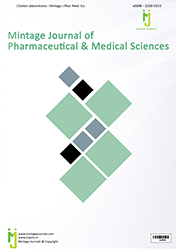THE ADVENT OF 3D PRINTING IN PHARMACEUTICALS
Opinion - (2023) Volume 12, Issue 3
Introduction
The advent of 3D printing technology has revolutionized numerous industries, and pharmaceuticals are no exception. This cutting-edge manufacturing technique, also known as additive manufacturing, involves the layer-by-layer deposition of materials to create three-dimensional objects. In the realm of pharmaceuticals, 3D printing offers a transformative approach to drug formulation and delivery. This essay explores the profound impact of 3D printing in pharmaceuticals, shedding light on its potential to revolutionize drug development, personalized medicine, and patient care.
Description
At the forefront of 3D printing in pharmaceuticals lies the ability to fabricate complex drug delivery systems with unparalleled precision. Traditional methods of drug manufacturing often struggle to achieve the level of intricacy required for controlled release formulations. 3D printing allows for the creation of intricate structures that can release drugs in a controlled manner, enabling tailored treatment regimens. This is particularly crucial for patients with unique physiological profiles or those requiring specific dosing schedules.
Personalized medicine, a paradigm shift in healthcare, is another domain where 3D printing holds immense promise. By harnessing the power of this technology, pharmaceutical companies can produce patient-specific dosage and formulations. This customization ensures that individuals receive the precise amount of medication required, optimizing therapeutic outcomes while minimizing side effects. For instance, pediatric patients or elderly individuals who may struggle with conventional dosage forms can benefit greatly from 3D printed medications tailored to their specific needs.
Furthermore, 3D printing facilitates the development of multi-drug combinations within a single dosage form. This advancement is particularly relevant in the treatment of complex conditions that require precise coordination of different medications. By amalgamating multiple active ingredients into a single tablet or capsule, 3D printing streamlines the administration process and enhances treatment adherence. Additionally, it enables the creation of novel drug delivery systems, such as polypills, which can simplify complex treatment regimens for patients.
One of the most significant contributions of 3D printing to pharmaceuticals is the rapid prototyping of drug formulations. Traditional drug development is often a protracted and resource-intensive process. With 3D printing, researchers can swiftly generate prototypes of drug products for testing, evaluation, and refinement. This expedites the iterative process of drug formulation, allowing for quicker advancements from concept to clinical trials. Consequently, pharmaceutical companies can accelerate the delivery of new and improved therapies to patients in need.
Conclusion
Beyond drug formulation, 3D printing is poised to revolutionize the production of personalized medical devices and implants. This extends the application of 3D printing to the realm of orthopaedics, dentistry, and other specialized fields within healthcare. Patient-specific implants, tailored to an individual’s anatomical specifications, can enhance surgical outcomes and minimize complications. The precision and customization afforded by 3D printing in this domain represent a monumental stride forward in patient-centred healthcare.
In conclusion, 3D printing stands as a transformative force in the pharmaceutical industry, ushering in an era of unparalleled innovation and customization. Its capacity to fabricate intricate drug delivery systems, enable personalized medicine, and expedite the drug development process is reshaping the landscape of pharmaceuticals. As researchers and pharmaceutical companies continue to harness the potential of 3D printing, we can anticipate a future where medications are tailored to individual needs, treatments are optimized for efficacy, and patient care is elevated to new heights. The convergence of 3D printing and pharmaceuticals heralds a new chapter in healthcare, promising a future where precision and personalization reign supreme.
Author Info
Finley Feek*Received: 29-Aug-2023, Manuscript No. mjpms-23-117147; , Pre QC No. mjpms-23-117147(PQ); Editor assigned: 31-Aug-2023, Pre QC No. mjpms-23-117147(PQ); Reviewed: 14-Sep-2023, QC No. mjpms-23-117147; Revised: 19-Sep-2023, Manuscript No. mjpms-23-117147(R); Published: 26-Sep-2023, DOI: 10.4303/2320-3315/236055
Copyright: This is an open access article distributed under the terms of the Creative Commons Attribution License, which permits unrestricted use, distribution, and reproduction in any medium, provided the original work is properly cited.

ISSN: 2320-3315
ICV :81.58

